Maintaining a cool indoor temperature can be challenging, especially for homeowners in the Philippines. Having to constantly cool down your home is synonymous with a high energy bill, which many find difficult to deal with—regardless of whether you use air conditioning or many stand fans.
Luckily, there is a simple and cost-effective way to cool down your home without breaking the bank: ceiling fans.
Ceiling fans help improve air circulation, keeping rooms fresh and comfortable without putting a strain on your electricity bill. In this article, we’ll explore why ceiling fans are essential for proper home ventilation, how to choose the right one, the different types available, and tips for installation and upkeep.
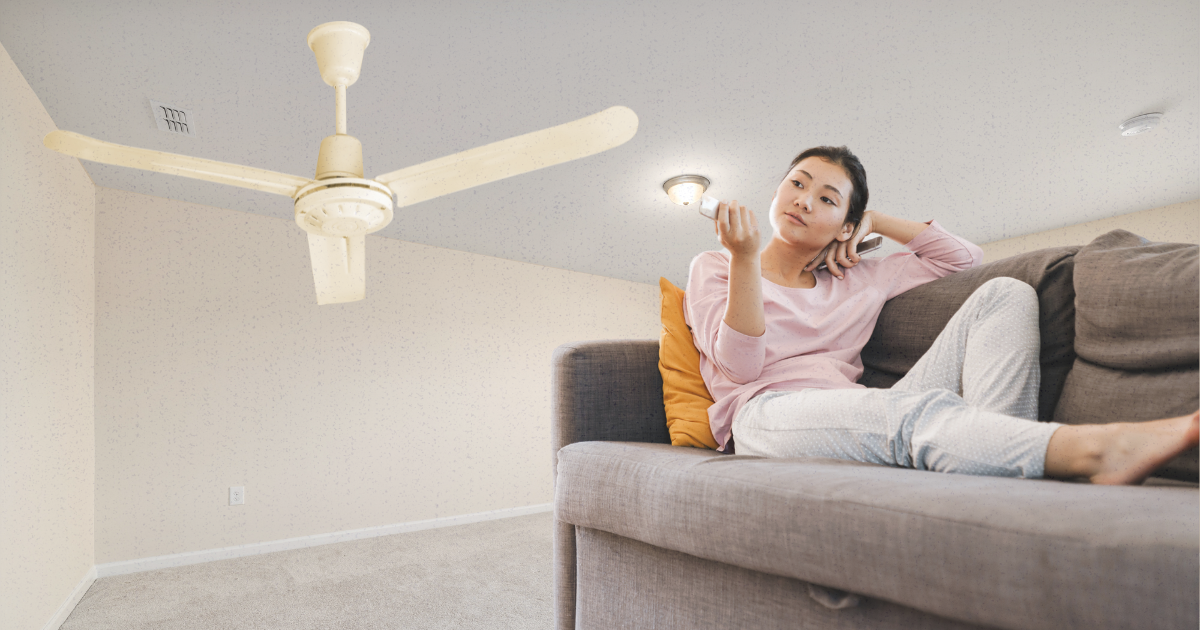
Why Ceiling Fans are Essential for Home Ventilation
While many homeowners may not view ceiling fans as essential in a household, they are in fact quite useful. Ceiling fans have quite the list of benefits: improving air circulation, indoor temperature, and even interior aesthetics. Let’s understand why ceiling fans are essential fixtures in any modern Filipino home.
- Improved Air Circulation: Ceiling fans work by circulating the air throughout the room, helping to break up stagnant pockets of air. This prevents rooms from feeling stuffy and ensures a more even distribution of temperature, making your space feel cooler and more comfortable.
- Reduced Energy Costs: If you’re looking to cut down on your energy bills, ceiling fans can be a game-changer. By improving airflow, ceiling fans allow you to rely less on air conditioning, which can significantly lower your energy consumption monthly.
- Enhanced Comfort: While ceiling fans don’t directly cool the air, they can create a wind-chill effect that makes rooms feel cooler. This is especially helpful during those warmer months when you just need a little breeze to make the heat more bearable.
Different Types of Ceiling Fans and Their Uses
Did you know that there isn’t just one type of ceiling fan? You have a lot of options to choose from! Let’s take a look at the six different types of ceiling fans to help you figure out which one is best for your space.
1. Standard Ceiling Fans
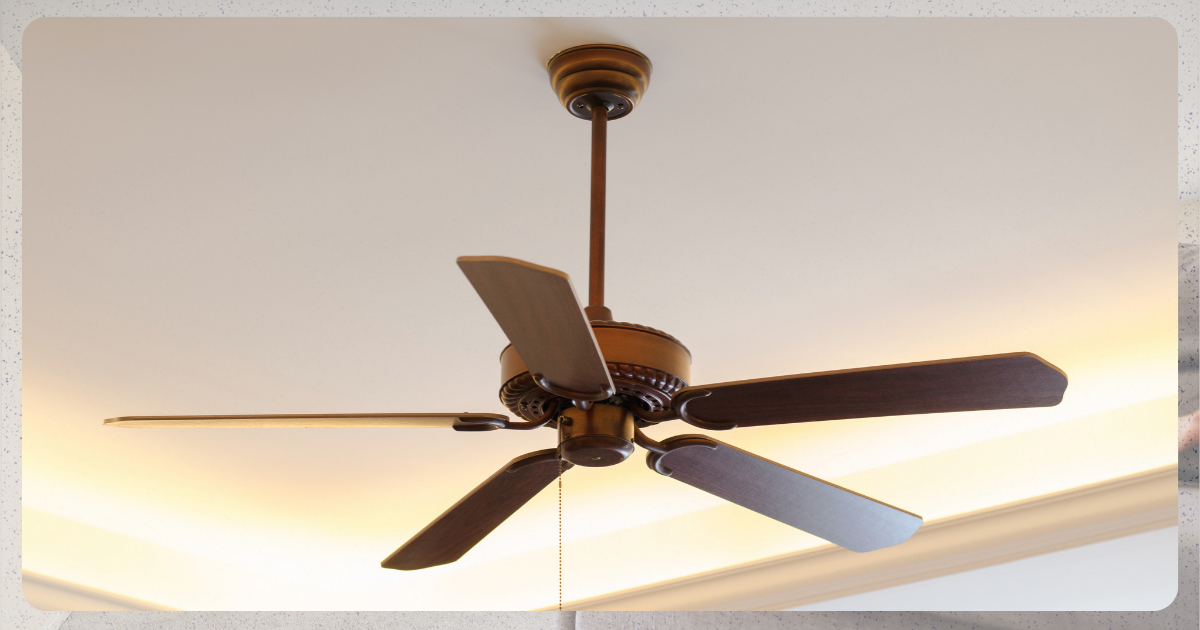
These are the most common and are suitable for typical room sizes and ceiling heights. They’re reliable and efficient for general ventilation in bedrooms, living rooms, and other areas.
2. Low Ceiling Fans
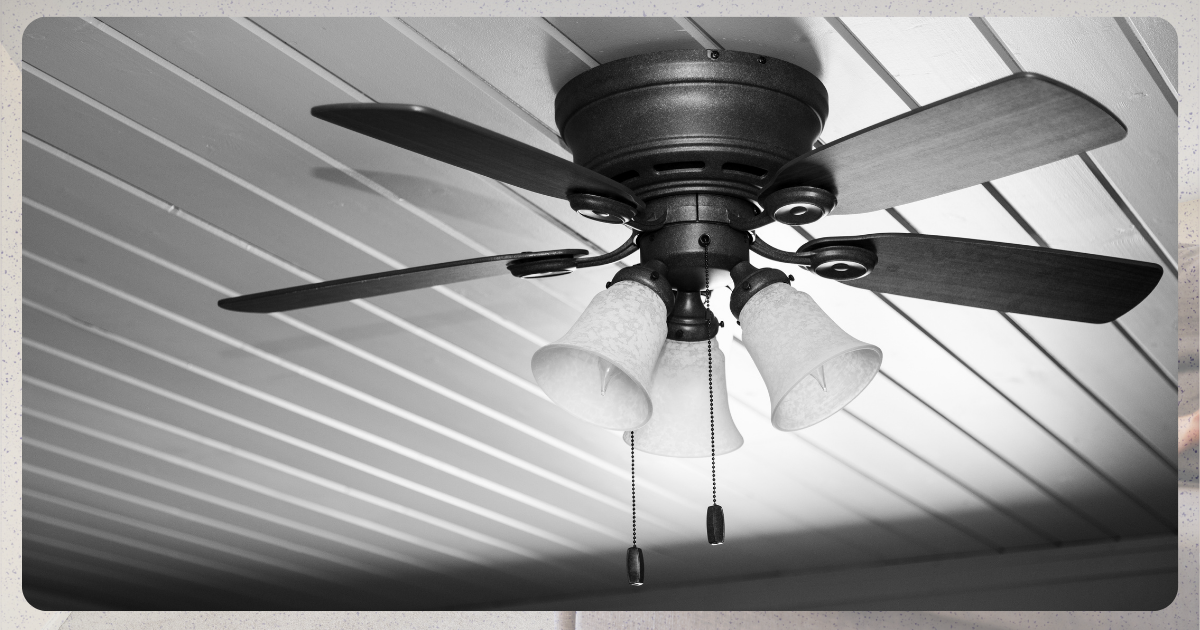
For rooms with low ceilings, these fans are designed to hang closer to the ceiling, maintaining safety clearance while still providing adequate airflow.
3. Smart Ceiling Fans

Ideal for those who love tech, these fans come with Wi-Fi or Bluetooth connectivity, allowing you to control the fan remotely via your smartphone or integrate it into your smart home system. Perfect for tech-savvy users.
4. Energy-efficient Ceiling Fans (BLDC Ceiling Fans)
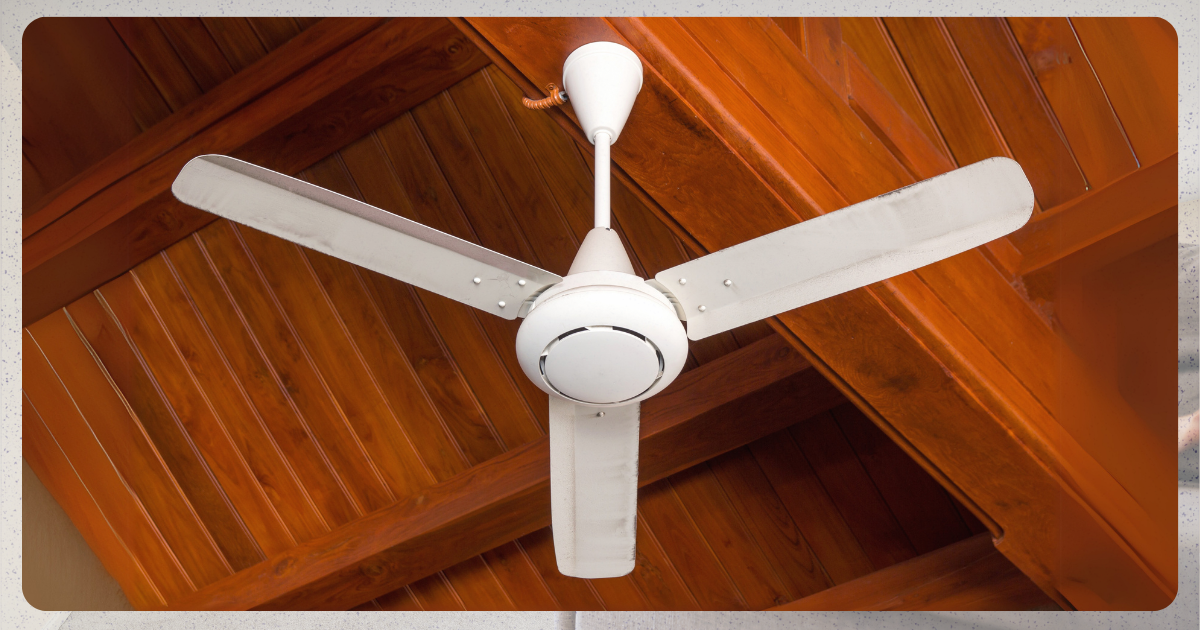
These fans use brushless DC motors, making them more energy-efficient than traditional fans. If you want to reduce electricity costs while keeping your home cool, an energy-efficient ceiling fan is a fantastic choice.
5. Outdoor Ceiling Fans
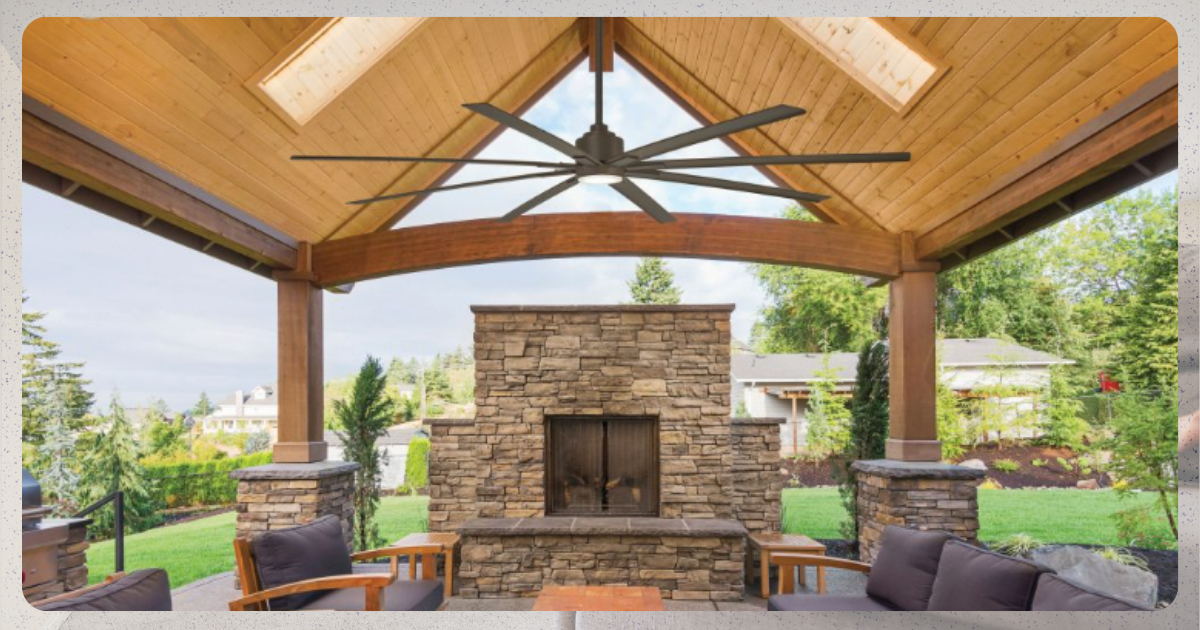
Image from LightsOnline
Made with weather-resistant materials, outdoor ceiling fans are designed to withstand the elements. They’re perfect for patios, decks, and other covered outdoor spaces where you need consistent airflow.
6. Commercial Ceiling Fans
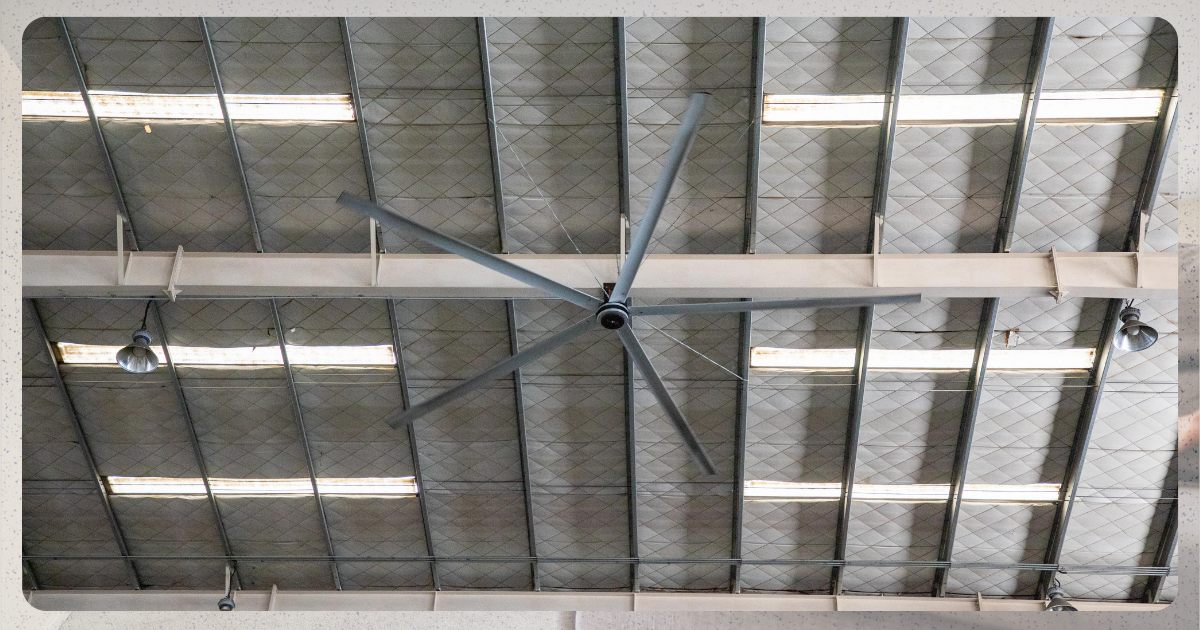
For larger spaces, such as warehouses or open-plan offices, commercial ceiling fans provide the power and airflow necessary to keep air circulating in vast areas.
Factors to Consider When Choosing a Ceiling Fan
There are many factors to consider when choosing a ceiling fan. Understanding these factors ensures your fan performs efficiently and lasts longer. Below are the different factors to consider when choosing a ceiling fan.
1. Room Size
The size of the room directly influences the size of the fan you should choose. Larger rooms require bigger blades to move more air, while smaller rooms benefit from smaller fans that can circulate air more efficiently.
- Small rooms (up to 75 sq. ft.): Opt for fans with blades that are 29 to 36 inches.
- Large rooms (up to 350 sq. ft.): Choose fans with blades 52 to 56 inches.
2. Ceiling Height
The height of your ceiling will determine what type of mount you need. A fan mounted too high or too low can result in poor air circulation and wasted energy.
- Standard ceiling height: A regular mount will work fine.
- High ceilings: A downrod mount allows the fan to hang lower and improves airflow.
3. Blade Pitch
The angle of the blades plays a big role in airflow. Aim for a blade pitch of between 12° and 15° for the most efficient movement of air.
4. Motor Power
A fan with a powerful motor will ensure consistent performance over time. This is key for both energy efficiency and durability. A strong motor can handle continuous use and maintain airflow without straining.
Tips on Installation, Balancing, and Regular Cleaning
Just like any other fixture in your home, a ceiling fan needs attention and upkeep. It requires regular maintenance checks and proper installation from the start. On top of that, ceiling fans also need regular cleaning to ensure they can do their job effectively for a long time.
Tips on Installation
Proper installation is crucial for both safety and efficiency. Ensure that you mount the fan securely to prevent it from wobbling. For high ceilings, a downrod mount helps lower the fan for better airflow.
How To Properly Balance the Fan
If your fan wobbles or moves unevenly, it’s time to balance it. Most fans come with a balancing kit that can help fix any issues, ensuring smooth, consistent operation.
Regular Cleaning
Regular maintenance keeps your fan running at its best. Dust the blades frequently to prevent dust buildup, which can impede airflow. Follow the manufacturer’s cleaning instructions for the motor and other components to maintain optimal performance.
Ceiling Fans are Cool!
Ceiling fans are a simple yet effective solution for improving air circulation and comfort in your home. They’re versatile, energy-efficient, and cost-effective, helping to reduce reliance on air conditioning while enhancing ventilation. When choosing the right ceiling fan, consider factors like room size, ceiling height, and the fan’s motor power. With the right fan, you can enjoy better airflow, lower energy costs, and a more comfortable home environment.
References:
Build with Ferguson. (n.d.). 7 Types of Ceiling Fans. Build with Ferguson. Retrieved November 25, 2024, from https://www.build.com/types-of-ceiling-fans/a21830
nEXT. (n.d.). Ceiling Fan Types. nEXT. https://nexlife.in/blog/ceiling-fan-types/










